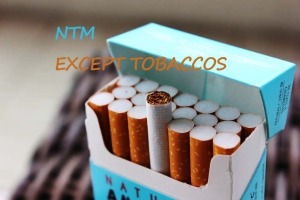Quick Guide to Non-Tobacco Materials
Technology presentation of cigarette paper

Quick Guide to Non-Tobacco Materials
To learn about cigarette manufacturing deeply, you better know something more than tobacco leaf.
That’s the topic I’m going to talk about today: Non-Tobacco Materials / NTM.
In a word, these materials include various additives, flavors, filters, and packaging elements that are combined with tobacco to create tobacco products such as cigarettes, cigars, pipe tobacco, and smokeless tobacco.
Nowadays, NTM is becoming more high-tech, because the market segment appears.
Now let’s see two important types of non-tobacco materials: Paper and Packaging.
Cigarette Paper Materials
We have introduced paper materials in the cigarette industry.
You can see the details about all paper types in this article:
Here I will introduce the technology of cigarette paper. Including low CO, microcapsule, flavor, color, and LIP cigarette paper.
-
Combustion adjuvant
As the main additive component of cigarette paper, combustion enhancers can adjust the combustion temperature and combustion state of cigarettes, and change the release of harmful components in smoke.
Functions:
increase the combustion rate;
reduce the combustion temperature during the suction process;
reduce the number of suction ports;
control the release of harmful components such as CO and tar content in the flue gas.
-
Microcapsule
Microencapsulated cigarette paper is designed to release flavors, aromas, or other active ingredients when the cigarette is smoked.
Microencapsulation is a process where tiny droplets or particles of a substance (such as flavor compounds or additives) are encapsulated within a protective shell. In the context of cigarette paper, microencapsulation involves embedding these microcapsules within the paper fibers.
It overcomes the difficulty of using characteristic spices on cigarette paper.
When the cigarette is lit and smoked, the heat breaks the microcapsules, releasing the encapsulated substances, which can then mix with the tobacco smoke and be inhaled by the smoker.
It is a part of the overall design of flavored or scented cigarettes, providing a unique smoking experience for consumers.
-
Flavored Cigarette Paper
Coating extract on the cigarette paper, and during the burning process of the cigarette, the extract releases flavor components through volatilization and cracking.
-
Colorized Cigarette Paper
Most cigarette paper is white. But the market always wants diversity.
Colored cigarette paper adds an element of personalization and aesthetics to the smoking experience, allowing users to choose from a variety of colors to suit their preferences.
Colored cigarette paper is mostly prepared by an extract coating method.

colored cigarette
-
LIP
LIP: Low Ignition Propensity
Cigarettes made of LIP cigarette paper have an automatic extinguishing function, which can effectively reduce the incidence of fire and improve safety.
Regulations in many countries and regions have required that cigarettes produced and sold must be LIP cigarettes.
A flame-retardant band is formed on the cigarette paper, which has a high-efficiency flame-retardant effect and significantly reduces the tendency to catch fire.
Cigarette Packing Materials
-
Cigarette transparent packaging materials – BOPP film
BOPP stands for Biaxially Oriented Polypropylene.
It is used in packaging cigarette outside packs and cartons.
Due to its combination of mechanical strength, transparency, moisture resistance, and versatility, BOPP film is a popular choice in the packaging industry.
-
Cigarette Outside Pack (Label) Paper
Cigarette label paper refers to the specialized paper used for labeling and packaging cigarette products.
These labels serve several purposes, including branding, anti-counterfeiting, regulatory compliance, and conveying essential information to consumers.
Cigarette label paper mainly includes offset paper, cast-coated paper, and white cardboard.

cigarette and pack
-
Inner Frame
The Inner Frame is the protective component inside the cigarette pack.
The material is mainly white cardboard, and it is common to coat a layer of gold or silver paint on its surface.
Odorless, thinner, more stable, and more environmentally friendly are the development trends of this type of material.
Cigarette aluminum foil is used in small cigarette packs to prevent moisture, and mildew, and preserve fragrance.
Calendered aluminum foil has good barrier properties to light, air, and water. And it is currently the most widely used.
The thickness is 0.0063-0.0065mm.

aluminum foil reel



 © cigpaper.com
© cigpaper.com
 "Open Bible" by Ryk Neethling is licensed under CC BY 2.0.
"Open Bible" by Ryk Neethling is licensed under CC BY 2.0.




 "Close Up Photo of Marlboro Cigarettes with Pack of Cigarettes in the Background on Black Table" by verchmarco is licensed under CC BY 2.0.
"Close Up Photo of Marlboro Cigarettes with Pack of Cigarettes in the Background on Black Table" by verchmarco is licensed under CC BY 2.0.